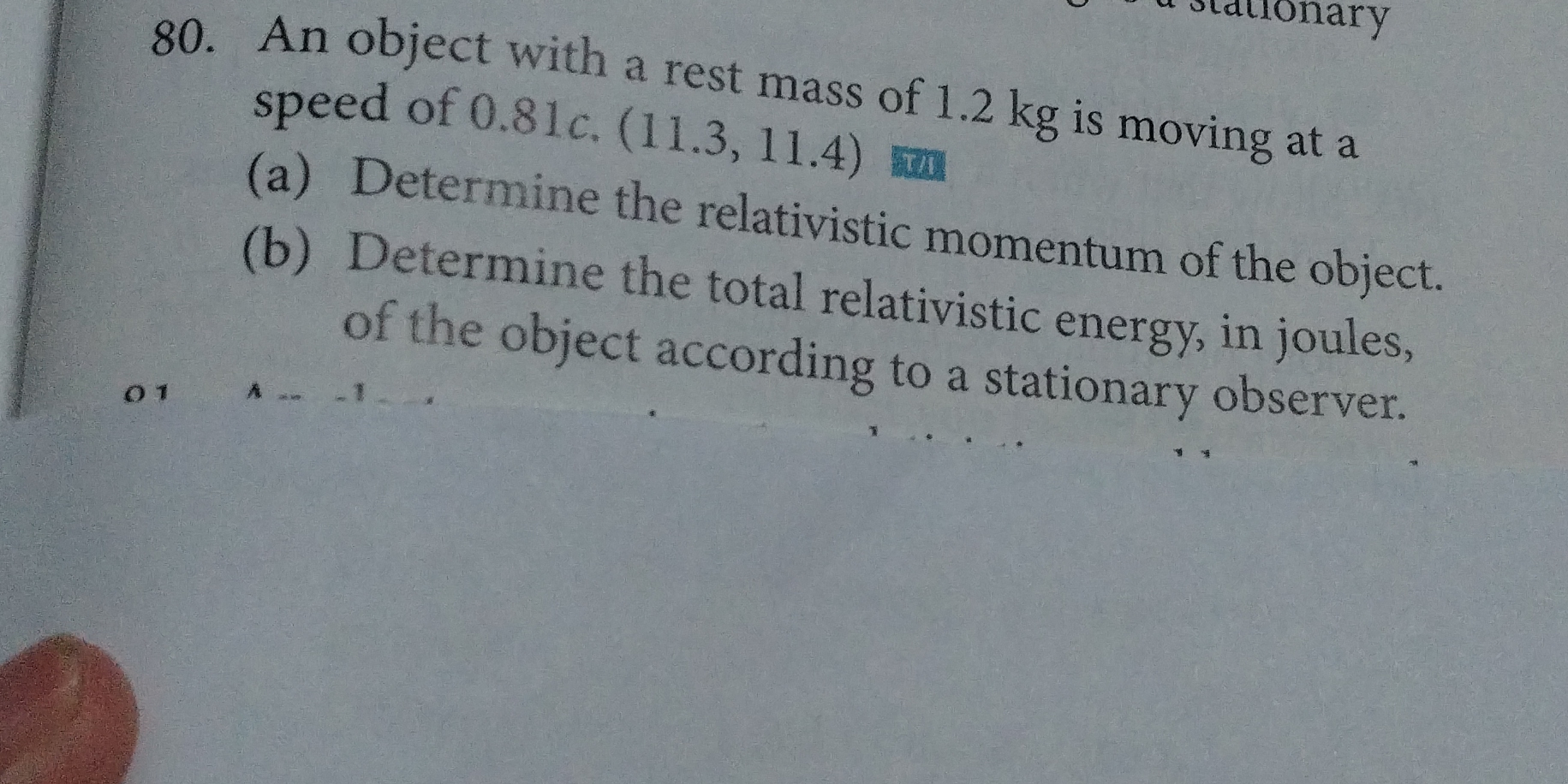(a) Determine the relativistic momentum of the object. (b) Determine the total relativistic energy, in joules, of the object according to a stationary observer.

Understand the Problem
The question is asking to calculate two things related to an object with a given rest mass and speed: (a) the relativistic momentum and (b) the total relativistic energy as seen by a stationary observer. This involves using the principles of relativity.
Answer
(a) The relativistic momentum is approximately $4.14 \times 10^8 \, kg \cdot m/s$; (b) The total relativistic energy is approximately $2.54 \times 10^{17} \, J$.
Answer for screen readers
(a) The relativistic momentum of the object is approximately $4.14 \times 10^8 , kg \cdot m/s$.
(b) The total relativistic energy of the object is approximately $2.54 \times 10^{17} , J$.
Steps to Solve
- Calculate the Lorentz Factor ($\gamma$)
The Lorentz factor is given by the formula:
$$ \gamma = \frac{1}{\sqrt{1 - \left( \frac{v}{c} \right)^2}} $$
Here, $v = 0.81c$. Substituting this in:
$$ \gamma = \frac{1}{\sqrt{1 - (0.81)^2}} = \frac{1}{\sqrt{1 - 0.6561}} = \frac{1}{\sqrt{0.3439}} \approx 1.708 $$
- Calculate the Relativistic Momentum ($p$)
The formula for relativistic momentum is:
$$ p = \gamma m v $$
Substituting the known values ($m = 1.2 , \text{kg}$, $v = 0.81c$, and $\gamma \approx 1.708$):
$$ p = (1.708)(1.2)(0.81c) \approx 1.688 , kg \cdot m/s \enspace \text{(after substituting $c \approx 3 \times 10^8 , m/s$)} $$
Calculating $p$:
$$ p \approx (1.708)(1.2)(0.81) \times 3 \times 10^8 \approx 41.4 \times 10^7 , kg \cdot m/s \approx 4.14 \times 10^8 , kg \cdot m/s $$
- Calculate Total Relativistic Energy ($E$)
The total relativistic energy can be calculated using the formula:
$$ E = \gamma mc^2 $$
Substituting in the values:
$$ E = (1.708)(1.2)(c^2) = (1.708)(1.2)( (3 \times 10^8)^2 ) $$
Calculating further:
$$ E = (1.708)(1.2)(9 \times 10^{16}) \approx 2.54 \times 10^{17} , J $$
(a) The relativistic momentum of the object is approximately $4.14 \times 10^8 , kg \cdot m/s$.
(b) The total relativistic energy of the object is approximately $2.54 \times 10^{17} , J$.
More Information
The calculations are based on Einstein's theory of relativity, which is essential for understanding high-speed objects. The Lorentz factor accounts for the effects of speed on time and momentum.
Tips
- Forgetting to convert the speed term when applying in momentum or energy equations.
- Mistaking the formula for classical momentum-energy for its relativistic versions.
- Incorrect calculations with the Lorentz factor which can significantly impact the outcomes.
AI-generated content may contain errors. Please verify critical information